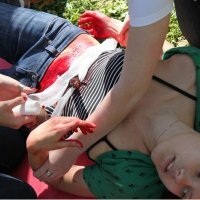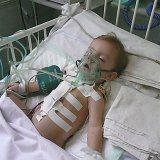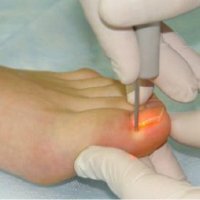First medical aid for wounds

First aid is important when injured. It may even depend on the life of the victim. There are deep and superficial wounds. Deep wounds, if damaged, the inner shells of the cavities( thoracic, skull, abdominal, joints) are called penetrating. And the other types of wounds are called non-penetrating, regardless of their depth. All wounds, other than wounds inflicted by the instrument during the operation, are infected. Depending on the type of wounding object, there are wounds stabbed, chopped, cut, bruised, gunshot, ripped.
First aid for injured
To prevent injury from injuries, microbes and injuries to already damaged tissues, the following rules for first aid should be observed.
It is strictly forbidden to touch the wound, remove anything from it, tear off the clothes adhering to the wound( you can only cut it on the free edge), lubricate and rinse the wound( you can lubricate the skin around the wound with iodine).
In case of wounds, the wound should be bandaged using only a sterile dressing.
Follow the damaged tissues to create maximum rest, because movement increases pain, even can lead to shock or other complications( eg, bleeding, spread of infection in the wound).The first thing with a strong pain syndrome specialist should introduce an anesthetic drug. It is achieved resting by placing the patient in a prone position, giving a certain position to the injured organ, creating immobility of damaged tissues or an organ.
First aid for the wounded is characterized by an urgent stop of bleeding with the help of a tourniquet or a pressure bandage, superimposition of a primary aseptic bandage on the wound, immobilization of parts of the body with significant damage to soft tissues, broken bones, large nerves and vessels. The primary aseptic wound dressing protects the wound from secondary infection, as it absorbs and delays( temporarily) infected infectious agents into the wound, toxins, as well as the products of disintegration of damaged tissue and prevents the development of infection and shock.
The first medical help in case of injury is also the application of a sterile bandage to the wound. When applying bandages, you need to follow a number of rules. Bandage should be in a convenient position for the wounded and for the caregiver. If the injured person lies, the person who is helping should be on the side of the wounded part of the body. The damaged part of the body is lifted for convenience of bandaging, placing a soft object under it, for example, a jacket or blanket. During bandaging it is necessary to monitor the patient's condition. Begin bandaging with the imposition of circular reinforcing strokes, which cover the edges of the wound by 2-3 cm;After lay a layer of cotton wool, fastened with a bandage, sling or kerchief.
Begin the bandage from the periphery, moving gradually to the base. Apply layers of bandage smoothly, without pockets and folds. Each next layer of bandage to cover the previous one should be 1/2 of its width, the bandage will then hold well, exert a uniform pressure.
First aid for a penetrating injury, for example, the chest, which marks the passage of air during breathing through the wound and the release of a foamy liquid, is the application of a sealing bandage to the wound. Use for this purpose an impermeable material for air( sometimes polyethylene film).
If a penetrating wound of the abdomen has occurred, then the inside of the wound may fall out, which in no case can not be adjusted. The wound should be closed with a sterile bandaging material, and around the dropped internals put a cotton-gauze ring on a sterile material, apply a not very tight bandage.
After providing first aid to the injured person, it is necessary to take care of its transportation to the medical institution. During transportation it is also necessary to determine the patient's position. It depends on the type of injury, the location of the wound on the human body. If there are suspicions of internal bleeding, it is necessary to create a maximum rest for the victim during transportation.



